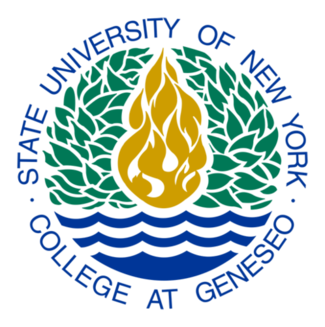As I got into my research this week, I was really focused on the Geneseo Humanities sequence (HUMN). Because my project with Emily revolves around Geneseo’s status as a liberal arts institution—and how Geneseo liberal arts reflexively interacts with the SUNY institution—I figured that the humanities sequence (Geneseo’s focal point for the liberal arts) was a good place to start. And with a base knowledge of the discourse surrounding our humanities courses, I was seeking to answer this question: with the highly politicized and seemingly controversial nature of the Geneseo Humanities sequence, why is it so hard to find a written argument making the case for the humanities sequence at Geneseo? In my experience at Geneseo—and many of my colleagues concur—it seems to be imprinted in the collective conscious at Geneseo that the humanities sequence is Geneseo’s claim to fame as a progressive liberal arts institution. While there are certainly students and staff who would disagree, the two humanities courses are the only two required courses for every single person that receives a degree from Geneseo, so one would think the importance of these courses would be made more readily available to students.
Although many schools have similar courses, the Geneseo humanities sequence is unique in its focus, breadth, and as a graduation requirement. Humanities 220 and Humanities 221 are part of Geneseo’s general education and “liberal arts breadth” courses. Accordingly, these courses, with other gen ed requirements, are expected to provide students with the knowledge to “participate ethically and intelligently as informed citizens of [their] communities.” More specifically, these courses “search for moral, social, and political alternatives and meaning as embodied in the institutions, culture, and literature of Western Civilization.” The first course begins with Ancient Greek writings and progresses to the 1600s, while the second course begins in the 1600s and progresses to the “present.” Learning outcomes from this sequence include the ability to think critically about current sociopolitical events and to “consider moral, social, and political issues from an interdisciplinary perspective,” among others.
The humanities sequence is perhaps the most controversial course offering at Geneseo. Students resent it because it makes receiving a degree more rigorous, and many students are equipped with the critical reading and writing skills to perform as well in Humanities as in the course of their major. Many faculty are critical of the sequence because it reinforces Western ideas instead of exposing students to a multicultural education; yet, the humanities sequence remains a defining characteristic of the SUNY Geneseo liberal arts education. As one student on a Geneseo Humanities forum put it, the humanities sequence is “the basis of the liberal arts education that we student come to Geneseo to get.” Clearly, students feel that understanding the tradition of Western thought is important—if not necessary—to became a capable citizen in today’s society.
As a result of polarized opinions regarding HUMN, the humanities sequence has been in a constant state of critique. In 2008, The Geneseo Provost issued a “Curriculum Task Force,” to (among other things) determine how to make the humanities sequence better. The task force resolved—after contemplating similar courses elsewhere—to leave the humanities sequence as it was. Yet, for all I read, I couldn’t find any executive reasoning explaining why HUMN should not be revised. Many students—myself included—feel that as Westerners, we are have been so entrenched in Western thought since our birth that we are already familiar with the ideas set forth in the course; the course simply provides a language with which to discuss Western ideologies—so why not explore non-western humanities in an attempt to broaden our horizons. While this line of thinking is certainly problematic in that it assumes both that no students at Geneseo grew up in a non-western culture, and furthermore, that all students shared the same educational upbringing, this line of thinking does a good job of exploring the true liberal arts experience: to think critically through many perspectives—especially those that are not your own.
While I didn’t find what I was looking for in this research expedition, I did discovery two incredibly important pieces of information regarding HUMN at Geneseo: our recently appointed interim provost—the person responsible for investigating curricular revision—was my professor for my course on Charles Dickens, as well as the person who suggested I apply for NAPLA. Additionally, the director of HUMN taught my course in literary theory. I’m in the process of reaching out to both professors to gain a better understanding of exactly why Geneseo has been so set on seeing the humanities sequence as the focal point of our liberal arts education. I’m hoping that a few conversations with these professors will allow me to return to this post with a detailed examination of the humanities sequence.
